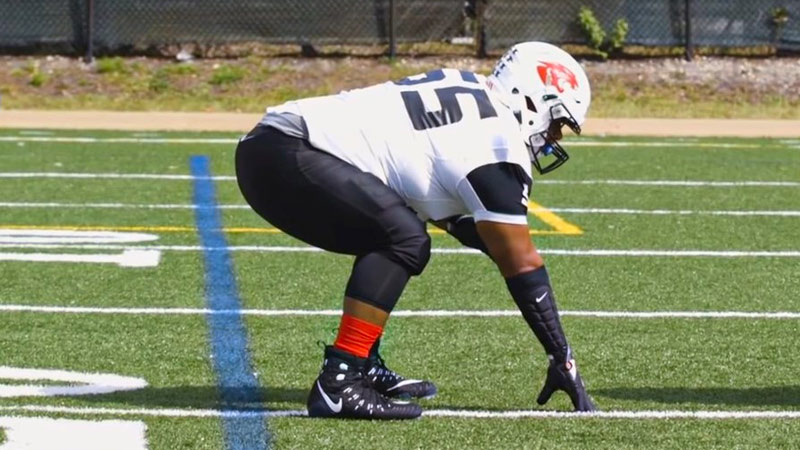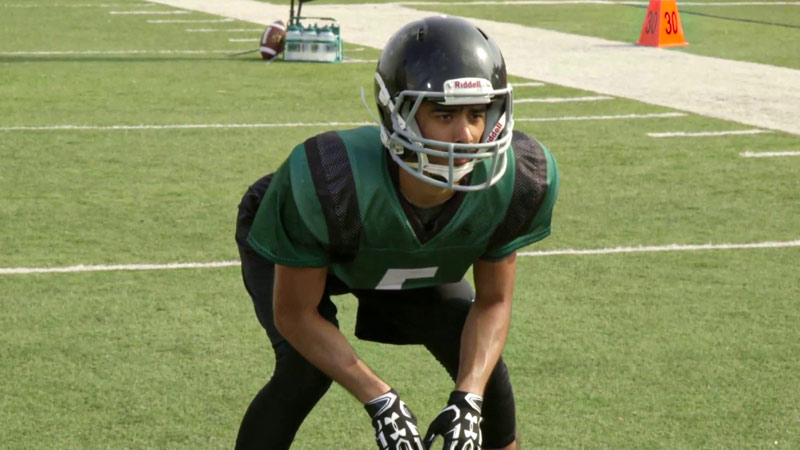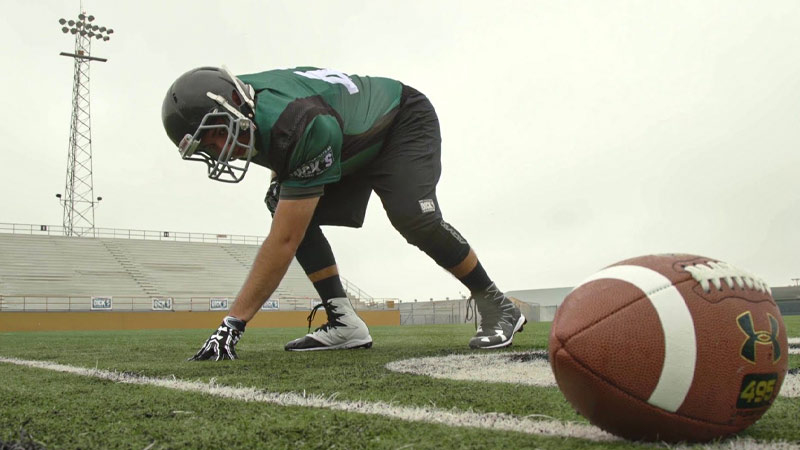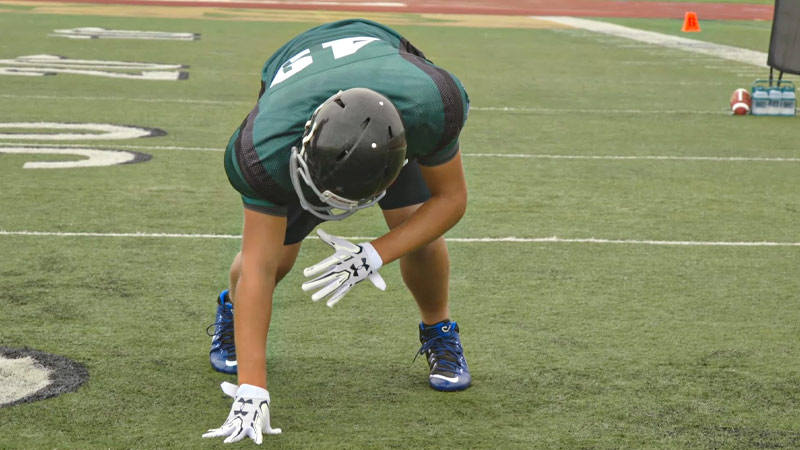It only takes an inch to draw the line between victory and defeat in football. If you are a practicing footballer, you would know how essential it is to master the fundamentals of America’s favorite team sport.
One of the fundamentals that’s often overlooked is the football 3-point stance. Ever wonder why those big, tough players crouch down with one hand on the ground before the action starts? It’s all about the football 3-point stance.
In football, the 3-point stance is often considered a secret weapon that offers players a powerful knack in the game. Today, we will break down the football 3-point stance so that anybody can understand.
Key Highlights
- The stance is all about balance; players distribute their weight evenly to stay stable and ready to move.
- In early football, players used a 4-point stance with both hands on the ground.
- The stance originated when football only allowed three players to be in the backfield. Linemen adapted to this limitation by adopting the 3-point stance.
- The football 3-point stance also has some variations – tilted 3-point stance, traditional 3-point stance, pinched 3-point stance, and more.
- In some variations, linemen use their free hand to cover their crotch area to protect it from accidental hits during plays.
- It is not limited to linemen; linebackers and tight ends may also use variations of this stance.
What Is Football 3-Point Stance?

Players often use this elemental technique, a.k.a football’s 3-point stance. It generally involves the linemen (both offensive and defensive), before the snap of the ball. However, the running back is also a part of this strategy.
In the 3-point stance, one player keeps one hand off the ground, and both feet and the other hand remain on the ground. The position offers stability and explosive power when the ball is snapped.
** Note: In football, a snap is also known as a hike, snapback, or a pass from the center. A snap is often the backward passing committed at the play’s start.
In this stance,
- One hand is placed on the ground, fingers pointing forward. It provides balance and stability.
- The opposite hand is held up and ready, near the chest or head, for quick engagement with an opponent.
- Both feet are firmly planted, shoulder-width apart, with the player’s weight evenly distributed between them.
- The player’s knees are bent at about a 90-degree angle to create a low, crouched position.
- The player’s back is generally flat and parallel to the ground to promote an explosive forward movement.
The ultimate goal of a three-point stance is to generate maximum power and speed. The stance is highly effective for those involved in the physical battles at the line of scrimmage.
Football 3-Point Stance: Variations

Even though the football 3-point stance is a fundamental technique, you will find some variations, too. Here are some common ones, explained below,
Traditional 3-Point Stance
This is the classic one. You put one hand on the ground, bend your knees, and get ready to explode forward. It’s used by both offensive and defensive linemen to block or tackle.
Tilted Stance
Defensive linemen sometimes lean forward slightly to anticipate the snap count and get a quicker jump. It helps them react faster when the ball is snapped, like a sprinter in the starting blocks.
Quick Set Stance
Offensive linemen may stagger their feet, with one foot slightly back and the other forward, to gain an advantage against fast pass rushers. This variation allows them to react more swiftly to protect the quarterback.
Pass Rusher Stance
Defensive linemen and pass rushers might use a higher and more upright stance. It allows them to see the play develop and react to passes or runs more effectively.
Pinched 3-Point Stance:
Defensive linemen may bring their feet closer together in this variation to explode into the gap between offensive linemen. They make it harder for the offensive line to anticipate their movements.
High Stance
Occasionally, linemen may use a higher stance with both hands on their thighs, ready to engage with opponents quickly.
The football 3-point stance variations suit different positions and strategies on the field. The playing strategies help players optimize their stance for their specific roles in the game.
Pros and Cons of Football 3-Point Stance

Are you trying to master the 3-point stance? Have a look at the benefits and drawbacks before you decide to move on with this stance.
Pros,
- Explosive Start: Offers a rapid and powerful launch off the line of scrimmage, crucial for linemen to gain an advantage.
- Low Center of Gravity: You have stability and balance, often making it difficult for opponents to push or topple the player.
- Versatility: The stance offers different positions that are highly adaptable and applicable across the field.
- Quick Reaction: Players can react swiftly to the snap count. The 3-point stance enables them to engage with opponents effectively.
- Power Generation: You have maximum power for blocking, tackling, or rushing the quarterback.
Cons,
- Limited Visibility: Players have restricted field vision as their heads are often down. They may struggle to read the play.
- Slower: While stable, it limits lateral movement. Players often need to transit quickly when essential.
- Neck and Head Exposure: Traditional stances leave the head vulnerable to hits; you may have an increased risk of neck and head injuries.
- Fatigue: Maintaining the low position can be physically taxing, especially over a long game, demanding endurance.
- Predictability: Opponents may anticipate a player’s movements based on their stance. You will need variation for strategic play.
Last Words
Remember, any stance in football can offer you more than what’s been promised. Experts believe the 3-point stance is more than just a technique. It’s a foundation that develops the strength and strategy of football.
So, whether you’re a player striving for that explosive start or a fan appreciating the artistry of the stance, remember that the low crouch is where touchdowns are born.
Congratulations! You now know what football’s 3-point stance is, and you can master it with practice and patience. Let us know in the comment section what you think of the remarkable football 3-point stance. We will be happy to help.
You can also share our article with your friends and help us grow!







